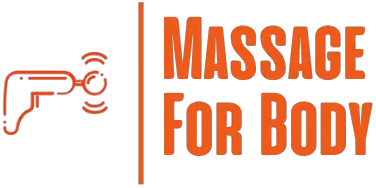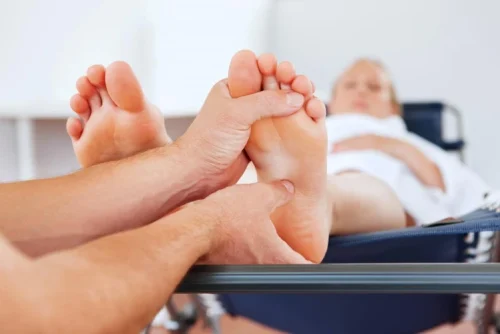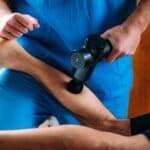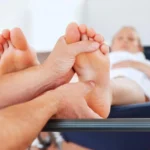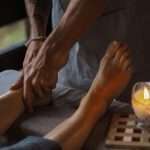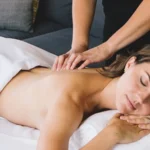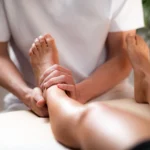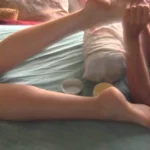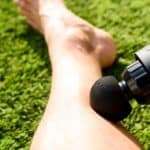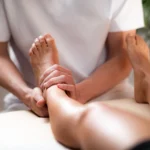Looking to learn how to massage women’s feet in a way that feels both relaxing and meaningful? Giving a woman a thoughtful foot massage is a simple yet powerful way to help her unwind, ease tension, and feel truly cared for. Whether it’s your partner, a friend, or a client, this step-by-step guide will show you exactly how to massage women’s feet with confidence — creating a soothing experience that feels pampering, personal, and unforgettable.
Table of Contents
💖 Why Women Love Foot Massages: More Than Just Relaxation
When you massage women’s feet, you’re offering more than physical relief — you’re creating a moment of emotional care and connection. Many women spend long hours on their feet, often balancing work, family, and self-care. A foot massage is a simple yet powerful gesture that says: “I see you. I care.”
Here’s why foot massages are especially appreciated by women:
- Nurturing Touch: Gentle touch stimulates the release of oxytocin — the “bonding hormone” — which promotes emotional closeness and calm.
- Stress Release: Foot massage calms the nervous system, helping her decompress after a hectic day.
- Feeling Valued: Taking the time to massage a woman’s feet can make her feel pampered, respected, and cherished.
- Quiet Intimacy: It’s an act of love that speaks volumes — without needing words.
So whether it’s a partner or a friend, giving the gift of a foot massage is often deeply appreciated on both physical and emotional levels.
Benefits When You Massage Women’s Feet

| Benefits | Description |
|---|---|
| Stress relief | A foot massage can help to reduce stress and tension, and provide a sense of wellbeing. |
| Improved circulation | A massage can increase circulation in the feet, helping to improve overall health. |
| Pain relief | Women may experience pain and discomfort in their feet due to various medical conditions, including arthritis and plantar fasciitis. A foot massage can help to relieve this pain. |
| Improved sleep | A foot massage can help to relax the body and mind, allowing for better sleep. |
| Reduced swelling | A foot massage can help to reduce swelling in the feet, providing relief for women who suffer from fluid retention. |
Foot massages are an excellent way to show your significant other that you care. When giving a foot massage to your girlfriend, you can provide physical and emotional benefits, making it an even more special experience for her. Not only will she feel pampered and relaxed, she’ll also experience improved circulation, stress relief, pain relief, improved sleep, and reduced swelling. Learning how to massage your girlfriend’s feet can be a wonderful way to show your appreciation and love.
Essential Supplies for a Foot Massage
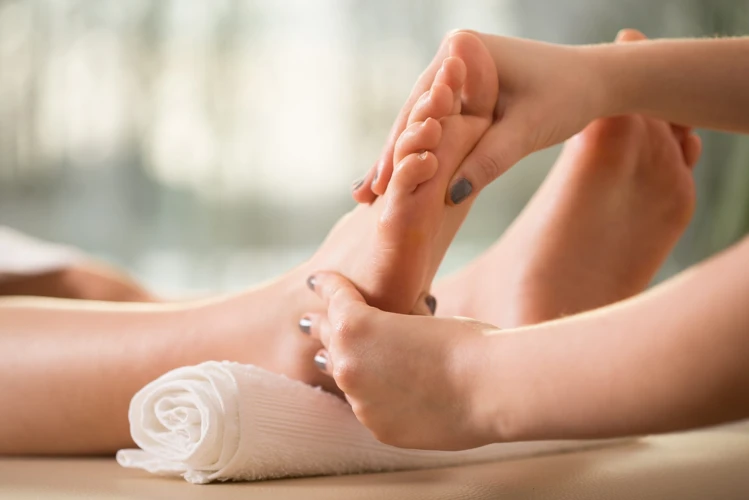
- Massage oil – for easy gliding and increased hydration.
- Foot scrub – to remove dead skin cells and soothe the feet.
- Cream or lotion – to nourish the skin and keep it soft.
- Massage brush – to stimulate the feet and improve circulation.
- Towel – to wipe away excess oil.
- Warm water – to soak the feet.
Step-by-Step Guide to Massage Women’s Feet
Ready to give a soothing and effective foot massage? Follow these simple steps to massage women’s feet in a way that promotes relaxation, comfort, and connection.
1. Set the Mood
Create a calming environment. Dim the lights, play soft music, and offer a cozy place to sit or lie down. A relaxed setting helps her fully enjoy the experience.
2. Wash and Warm Her Feet
Before you massage women’s feet, gently wash or wipe them with a warm towel. You can also soak them in warm water with Epsom salt for added relaxation.
3. Apply Massage Oil or Lotion
Choose a nourishing oil like coconut, almond, or lavender-infused massage oil. Rub it between your hands to warm it up before applying it to her feet.
4. Start with Gentle Strokes
Begin by using light, sweeping motions along the top and sole of her foot. This helps spread the oil and warms up the tissue.
5. Focus on the Soles
Use your thumbs to apply circular pressure along the arches and heels. This is where much of the foot tension lives — take your time here.
6. Massage Each Toe
Gently squeeze, twist, and pull each toe. Use your fingertips to massage between the toes as well — it can feel surprisingly soothing.
7. Work the Ankles and Sides
Use circular motions around the ankles and glide your thumbs along the outer edges of the feet. This helps promote circulation and release tension.
8. Check in with Her
Ask how the pressure feels. When you massage women’s feet, communication ensures comfort and enhances trust.
9. Finish with Long, Soothing Strokes
End with long, relaxing strokes from the toes to the ankles. This calms the nervous system and signals the massage is complete.
👉 Read More: How to Use a Foot Massager for Maximum Relief
Learn how to enhance your massage sessions with electric or manual foot massagers.

Tips for Massaging Your Girlfriend’s Feet
- Prepare the Environment: Create a calming atmosphere for your foot massage. Make sure the room is warm and comfortable, and add some soothing music or aromatherapy candles to help her relax.
- Gently Clean Her Feet: Before the massage, use a warm, damp cloth to clean your partner’s feet and remove any dirt or sweat. A simple washcloth and some mild soap should do the trick.
- Oil Up: Rubbing oil into the feet helps to make them more flexible and increases circulation. Choose a good massage oil and apply it liberally to your partner’s skin.
- Start Massaging: Begin by using a circular motion to massage the tops of your partner’s feet. Be gentle but firm, and gradually increase the pressure as you go. Move from the toes to the heel, kneading and rubbing the entire foot.
- Include the Ankles: Don’t forget to massage the ankles too. Use your thumbs to press and massage the sides of the ankles and the Achilles tendon.
- Work on the Pressure Points: The feet are full of pressure points that can help to relieve tension and improve circulation. Use your thumbs to press and massage these points, and make sure to be gentle.
- Finish Up: Once you are finished, use a warm, damp cloth to wipe away any excess oil. Give your partner a few moments to relax and enjoy the feeling of the massage.
🧭 Foot Reflexology Zones: Pressure Points That Feel Amazing
Want to take your skills to the next level? When you massage women’s feet, knowing a few key reflexology zones can turn a basic massage into a deeply therapeutic experience.
Here are a few pressure points to focus on:
- Toes: Linked to head and sinus relief — gentle rubbing can help clear tension.
- Ball of the Foot: Connected to the chest and heart — circular pressure here can feel especially comforting.
- Arch: Associated with internal organs like the stomach and liver — ideal for stress relief and digestion support.
- Heel: Related to the lower back and pelvic area — a firm massage here can ease tension after standing all day.
- Outer Edge of the Foot: Tied to the spine — glide your thumbs along this zone for a full-body effect.
You don’t need to be a reflexologist — even light, thoughtful pressure in these areas can make a big impact.
⚠️ Common Mistakes When You Massage Women’s Feet (And How to Avoid Them)
Even with the best intentions, certain habits can make a foot massage less enjoyable. If you’re trying to learn how to massage women’s feet in a way that feels truly relaxing, steer clear of these common missteps:
- Using Too Much Pressure: Start light and only increase pressure if she says it feels good. Too firm, and it can feel more painful than soothing.
- Cold Hands: Warm your hands first — cold touch can ruin the moment.
- Skipping Communication: Always ask how the pressure feels and if she’s comfortable.
- Ignoring the Toes or Arches: These areas hold lots of tension and can bring the most relief.
- Being Too Quick: Rushing through a foot massage misses the point. Take your time and be present.
Being mindful of these simple things can transform your massage from “meh” to memorable.
❤️ Romantic vs. Therapeutic: Two Ways to Massage Women’s Feet
Not all foot massages are the same — and that’s a good thing. Depending on your intent, you can approach the experience in different ways. Here’s how romantic and therapeutic foot massages differ:
| Aspect | Romantic Massage | Therapeutic Massage |
|---|---|---|
| Goal | Connection, affection, pampering | Pain relief, relaxation, recovery |
| Setting | Dim lighting, candles, music, cozy space | Clean space, good lighting, firm chair or bed |
| Touch | Gentle, slower, more sensual | Targeted pressure, structured movements |
| Duration | Flexible, unstructured | 10–20 minutes per foot |
Understanding the difference helps you tailor your approach — whether you’re trying to spark intimacy or simply offer physical relief.
❓Frequently Asked Questions
How often should you massage women’s feet?
A few times a week is ideal, but even once a week can offer great benefits. Listen to her needs and comfort.
Is it safe to massage a woman’s feet during pregnancy?
Yes, but with caution. Avoid deep pressure on certain reflexology points, especially near the ankles. Always consult her doctor first.
Can massaging women’s feet help with headaches or anxiety?
Yes! Reflexology points in the toes and arches are linked to stress and tension relief, which may reduce headaches and promote calm.
Should I use heat before or after a foot massage?
You can use a warm towel or foot soak beforehand to relax the muscles and make the massage more effective.
Do I need special training to massage women’s feet?
Not at all. With a little guidance, mindfulness, and communication, anyone can give a soothing and enjoyable foot massage.
What type of oil should be used for a foot massage?
For the ultimate experience when you massage women’s feet, use natural oils that nourish the skin and provide smooth glide. Great options include cold-pressed almond, coconut, olive, or sesame oil. These are lightweight, gentle, and easily absorbed.
💡 Tip: Add a few drops of lavender, chamomile, or peppermint essential oil for an extra calming effect and pleasant aroma. Just be sure to check for any skin sensitivities first.
What techniques should be used to give a foot massage?
Start by warming up the foot with gentle circular motions using your palms. Then use long, sweeping strokes from heel to toes to soothe the entire foot. Focus on these techniques:
- Thumb pressure on the arch, heel, and ball of the foot
- Gentle kneading along the sole and outer edges
- Toe work, including light pulls, twists, and squeezes
- Light tapping or percussive strokes to finish
When you massage women’s feet, always check in about pressure and comfort — everyone has different sensitivities.
How long should a foot massage typically last?
A relaxing foot massage typically lasts 10 to 15 minutes per foot, but even a quick 5-minute session can offer great relief. For deeper tension or a more indulgent experience, aim for up to 30 minutes total.
What should be done after the foot massage is complete?
- 🧼 Clean Up: Wipe off any excess oil from the feet with a warm towel. Discard used towels and wash your hands.
- 💬 Check In: Ask how the massage felt and if there’s anything else she needs.
- 🤝 Show Appreciation: Whether it’s a partner or client, thank her for trusting you to massage her feet.
- 🔄 Follow Up: If the massage was part of ongoing care, follow up the next day to ask how she’s feeling.
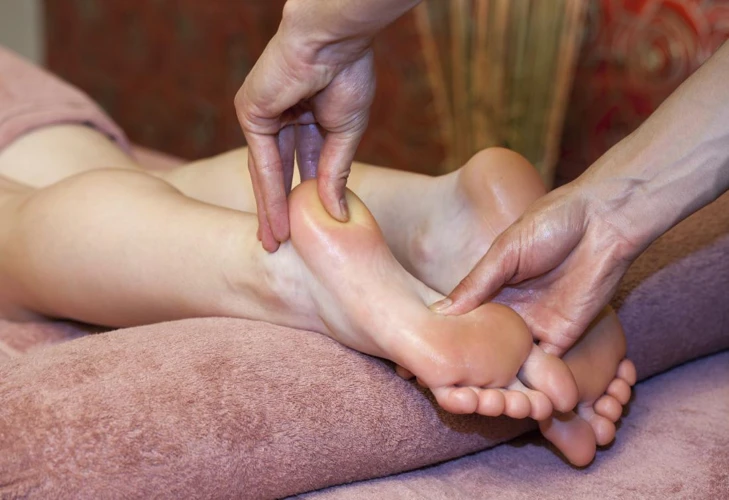
🔗 Read More
👉 Foot Reflexology Benefits: A Beginner’s Guide
Discover how applying pressure to the right points on the feet can support full-body wellness.
🧘 Final Thoughts
Giving your partner a foot massage can be a great way to show your affection and appreciation. With the right technique, you can make your partner feel truly relaxed and comfortable. Follow these steps and use the right products to make sure your massage is a success.
📖 References
- WebMD – Health Benefits of a Foot Massage
- Cleveland Clinic – Everything You Need to Know About Massage Therapy
- Healthline – Foot Reflexology Chart: How it Works, Potential Risks, and Benefits
- American Institute of Alternate Medicine – 13 Amazing Health Benefits of Foot Massage
⚠️ Disclaimer:
This article is for informational purposes only and does not constitute medical advice. Always consult with a licensed healthcare provider or certified massage therapist before beginning any new treatment, especially if you have pre-existing health conditions or concerns
